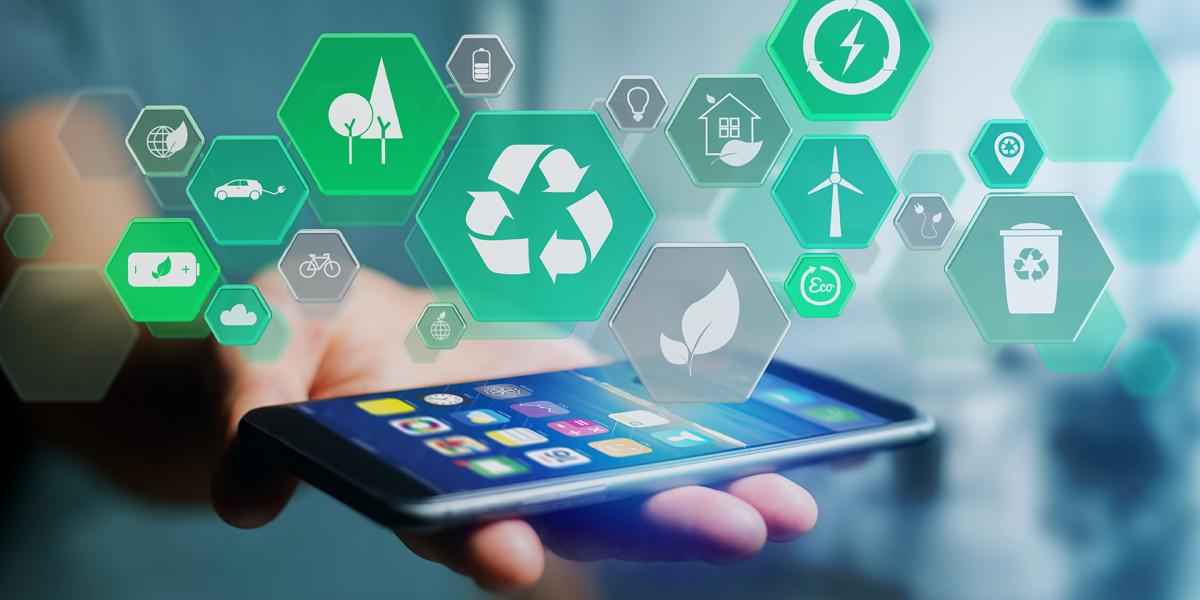
You are here

(Editor’s Note: 3E is expanding news coverage to provide customers with insights into topics that enable a safer, more sustainable world by protecting people, safeguarding products, and helping businesses grow. DEEP DIVE articles, produced by reporters, feature interviews with subject matter experts and influencers as well as exclusive analysis provided by 3E researchers and consultants.)
The European Union’s (EU) ecodesign requirements for smartphones and tablets has the potential to transform the industry in a more sustainable way, but whether the eventual impact will be as significant as the EU aims to achieve in its broader environmental goals remains to be seen, experts told 3E.
The Commission Regulation (EC) No. 2023/1670 on Ecodesign Requirements for Smartphones, Mobile Phones Other Than Smartphones, Cordless Phones, and Slate Tablets (Ecodesign for Sustainable Products Regulation, or ESPR) is the underlying regulation supporting the EU’s energy labeling and ecodesign requirements for mobile phones, cordless phones, and tablets, effective 20 June 2025.
Ecodesign is one pillar of the EU’s circular economy action plan, which itself is a building block of the larger European Green Deal.
“Having such a large economic bloc enact these rules will likely have a knock-on effect not only in how phones are designed globally, but also [through] global legislation,” said UK-based Steven Athwal, managing director at Euro Communications Distribution Ltd., which specializes in mobile phone repair and refurbishment. “If they're a success, then other nations will likely follow suit in enacting similar regulations. If unsuccessful, phone design will noticeably branch in two with slimmer, less repairable models available overseas and bulkier, easy-to-repair models available in Europe.”
Review
The Ecodesign framework is intended to develop a more circular economy and to reduce the EU’s carbon footprint, said Triveni Bhoyar, research associate at Market Research Future.
By 2030, mobile phones and tablets manufactured in accordance with these guidelines will save over 14 terawatt hours of primary energy each year — one-third of the current energy use of such devices today — according to the European Commission.
Makers of smartphones and tablets sold in the EU must provide information about their energy efficiency, battery longevity, dust and water resistance, and resilience to accidental drops. They will also be obliged to make critical spare parts available within 5-10 working days and for seven years after the product has been discontinued in the EU market.
“The new rules will also help to maximize the usage of crucial raw resources and make recycling easier,” Bhoyar said. “This will assist EU customers in making better informed and sustainable purchase decisions and encourage sustainable consumption.”
And by 2027, a requirement that smartphone batteries will be easily replaceable by a third party (without specialized tools or adhesives holding the battery in place) is likely to fundamentally change the way that smartphones are designed.
Analysis
The tradeoff for the tech industry will be a short-term increase in production costs that will be passed on to consumers, said Sascha Arnold, counsel at Freshfields Bruckhaus Deringer in Hamburg, Germany.
“If you don't have a lot of money and you rely on low-cost cellphones, it's nice to hear that your cell phone will last longer,” Arnold said. “And that during the device’s lifetime, your costs will go down. But it doesn't really help you if in the beginning you need to pay more to even have access [to a device].”
A provision that would have required manufacturers to display and adhere to a maximum price for spare parts was removed, which weakens some of the ESPR’s efforts to protect consumers, Bhoyar said. However, a new ESPR is expected to be finalized in the coming months, which could incorporate feedback from stakeholders submitted in the public consultation period that ended in May 2023.
The Right to Repair Europe coalition called upon the commission to prioritize ecodesign measures for electronics, expressing concerns about the EU market being “flooded with short-lived devices” and that products will be disposed of inefficiently, such as the rare earth minerals that are rendered inaccessible in some smartphone batteries that cannot be repaired independently. This concern deserves consideration since more than six smartphones are sold every second in the EU, according to the European Environmental Bureau, a coalition of environmental NGOs.
The European Electronics Recyclers Association urged the commission to consider mandating testing of recycled content to ensure “environmentally sound management procedures are taking place” and to follow a “cradle-to-grave” approach with e-waste, including the design stage, consumer use, re-use, and proper discarding of devices so their components can be safely and effectively recovered and processed.
Experts cautioned it is important to be mindful of unintended consequences or other unforeseen problems that could arise for smartphone manufacturers and their suppliers and customers alike as they attempt to make their businesses more sustainable.
“We don't know what loopholes companies may find, and it's very possible that as soon as batteries are more easily replaceable, a new bottleneck becomes apparent,” Athwal said. “Ultimately, these new rules are a step in the right direction, and a necessary change if we want to move toward more sustainable technology, but the rate of progress could turn out to be very small.”
About the author: Stefan Modrich is a Washington, D.C.-based reporter for 3E. He covers the latest developments in environmental health and safety policy and regulation. Modrich previously wrote for S&P Global Market Intelligence, The Arizona Republic and Chicago Tribune. He is an alumnus of Arizona State University and the University of Zagreb.
Stefan_Modrich_3E_Headshot-125px.jpg


 Top
Top